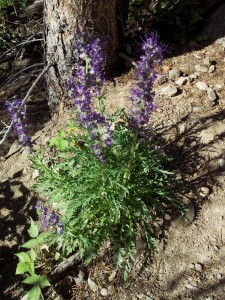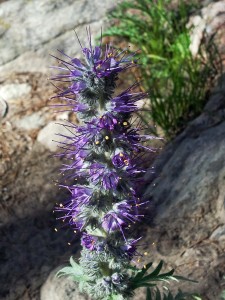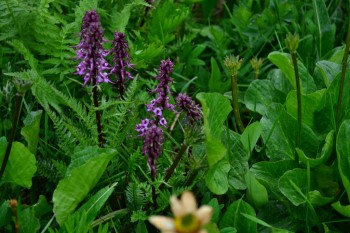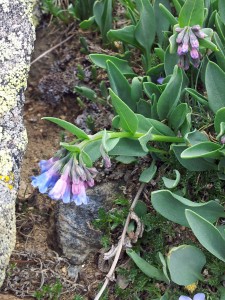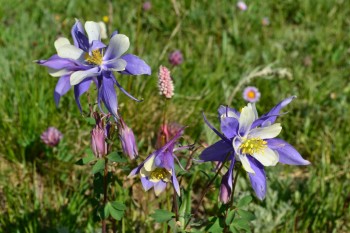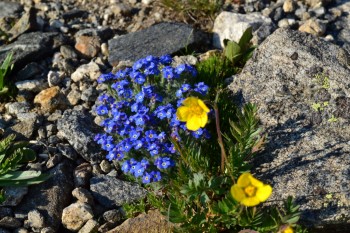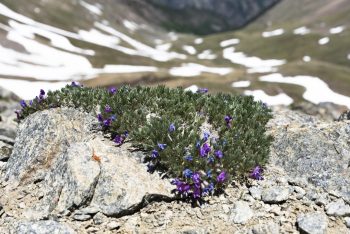A Quest into the Wild
Blue and Purple Flowers
The color blue in a flower can have many meanings — as we see with most things — but most commonly is seen as a symbol for tranquility, trust, and hope. Blue flowers are found throughout nature and are vivid and awe inspiring. Purple flowers have come to signify royalty, dignity and success. The color purple in general has been associated with monarchs for centuries. Many purple flowers exist in nature and they are as vivid and stunning as their blue counterparts.
Purple Fringe: Phacelia sericea
Twin Sisters Hike
Late June, Subalpine
These guys are really cool looking. In the close up of the flower on the right you can see the conspicuous yellow stamens poking out in all directions. This guy can get to be about a foot tall. The leaves look like they have fine hair all alone them and the leaves grow in what appears to be an alternating pattern. In fact the species name sericea means ‘silky’ which refers to the silky appearance the leaves have due to the many fine hairs growing on them.
Elephant’s Head: Pedicularis groenlandica
DeCaLiBron Hike
Taken late July, Subalpine
Elephant’s Head gets its name from the interesting shape of the flower which resembles the trunk of an elephant. These plants can grow to close to 3 feet tall. They like to grow near marshy areas and have fern-like leaves, but are not a member of pterophyta.
Alpine Bluebells: Mertensia alpina
Twin Sisters Hike
Late June, Alpine
The alpine bluebell is in a eponymous genus called Mertensia which is named for the German botanist Franz Karl Mertens (or so I read). This group contains many spectacular flowers such as the Lanceleaf Chiming Bells, the Tall Bluebell, and many others. All the flowers have blue flowers in common which seem to hang or droop off the apex of the stem. As the name suggests, the shape of the flower is similar to a bell. This genus is known to hybridize and the classification of the dwarf plants is contentious. Regardless, I was very happy to see this bluebell on Twin Sisters since it had been such a tough day and the many flowers gave me some inspiration to keep going.
Colorado Columbine: Aquilegia coerulea
Grays and Torreys Hike
Montane to Alpine, June/July
The Colorado Columbine is a large complex flower. It has a few variations in color, but the most famous is the blue and white variety as shown above. They can grow to 2 feet in height and are rather conspicuous. This example was found on our sunrise hike of Grays and Torreys. They are very attractive flowers.
Alpine Forget-Me-Not: Eritrichum aretioides
Grays and Torreys Hike
Sunny, Rocky alpine regions, June/July
These blue flowers are common in the alpine and enjoy sunny, rocky areas. We found these flowers on the saddle between Grays and Torreys in the light of the sunrise. They are very pretty and dainty flowers.
Stalkpod Locoweed: Oxytropis podocarpa
Hike: Belford and Oxford
Alpine, June, 13,800 ft.
The Oxytropis genus can be difficult to distinguish between, particularly O. multiceps and O. podocarpa. Podocarpa likes higher altitudes and so that can be one clue that you are seeing podocarpa versus multiceps. These plants can also be confused with Dwarf Clover (Trifolium nanum). The Oxytropis genus, including both varieties discussed above are poisonous; but they are beautiful.
